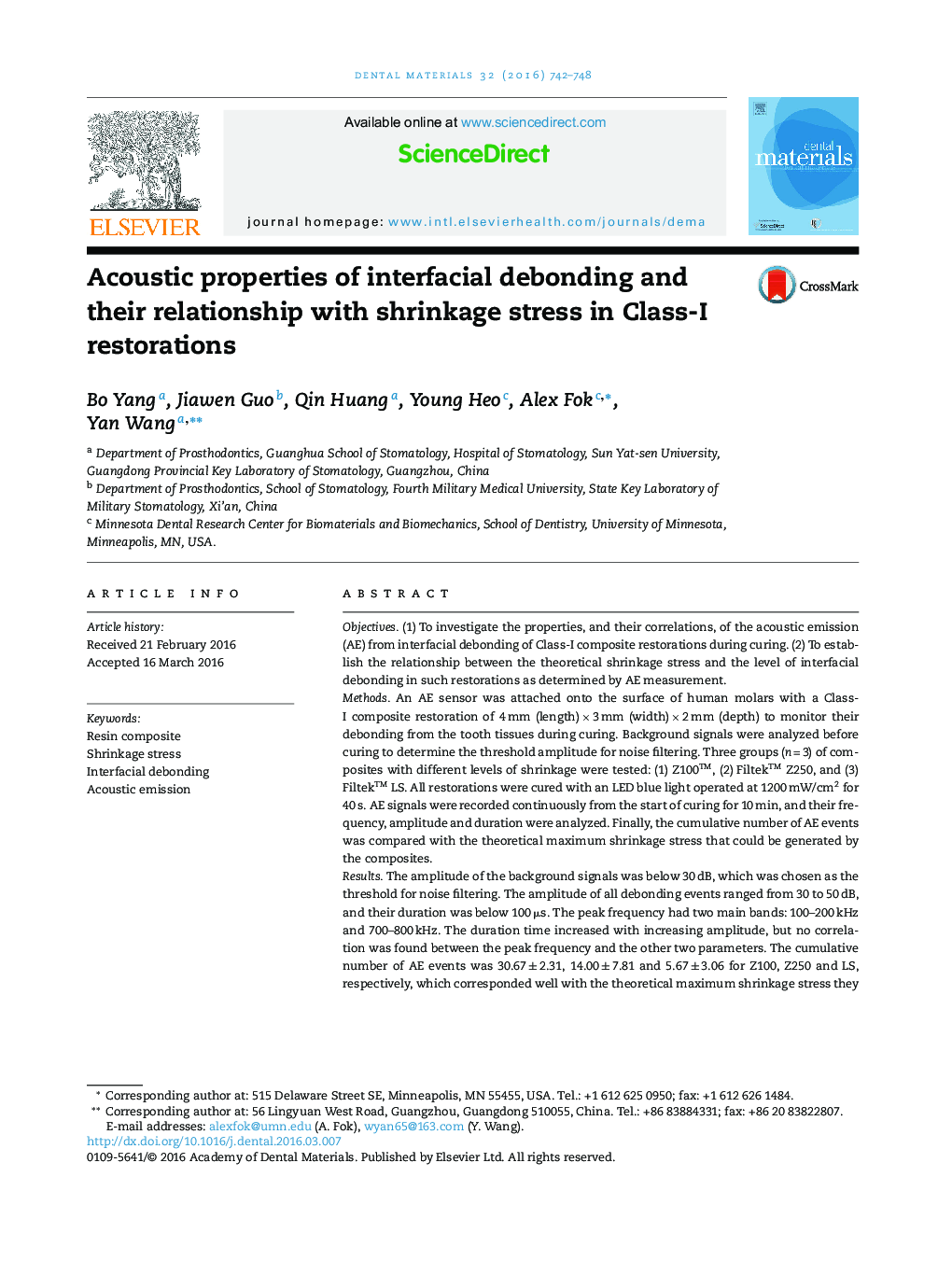| کد مقاله | کد نشریه | سال انتشار | مقاله انگلیسی | نسخه تمام متن |
|---|---|---|---|---|
| 1420384 | 986360 | 2016 | 7 صفحه PDF | دانلود رایگان |

Objectives(1) To investigate the properties, and their correlations, of the acoustic emission (AE) from interfacial debonding of Class-I composite restorations during curing. (2) To establish the relationship between the theoretical shrinkage stress and the level of interfacial debonding in such restorations as determined by AE measurement.MethodsAn AE sensor was attached onto the surface of human molars with a Class-I composite restoration of 4 mm (length) × 3 mm (width) × 2 mm (depth) to monitor their debonding from the tooth tissues during curing. Background signals were analyzed before curing to determine the threshold amplitude for noise filtering. Three groups (n = 3) of composites with different levels of shrinkage were tested: (1) Z100™, (2) Filtek™ Z250, and (3) Filtek™ LS. All restorations were cured with an LED blue light operated at 1200 mW/cm2 for 40 s. AE signals were recorded continuously from the start of curing for 10 min, and their frequency, amplitude and duration were analyzed. Finally, the cumulative number of AE events was compared with the theoretical maximum shrinkage stress that could be generated by the composites.ResultsThe amplitude of the background signals was below 30 dB, which was chosen as the threshold for noise filtering. The amplitude of all debonding events ranged from 30 to 50 dB, and their duration was below 100 μs. The peak frequency had two main bands: 100–200 kHz and 700–800 kHz. The duration time increased with increasing amplitude, but no correlation was found between the peak frequency and the other two parameters. The cumulative number of AE events was 30.67 ± 2.31, 14.00 ± 7.81 and 5.67 ± 3.06 for Z100, Z250 and LS, respectively, which corresponded well with the theoretical maximum shrinkage stress they could produce, i.e. 42.5, 97.5 and 182.5 MPa. R2 = 0.9955 for the linear regression. The theoretical shrinkage stress below which no AE events were detected was about 14.3 MPa.ConclusionsFor the materials considered, the amount of interfacial debonding produced in a Class-I restoration during curing increased linearly with the theoretical maximum shrinkage stress of the composite. The theoretical stress below which no AE events were detected was similar to composite–dentin bond strength reported in the literature.
Journal: Dental Materials - Volume 32, Issue 6, June 2016, Pages 742–748